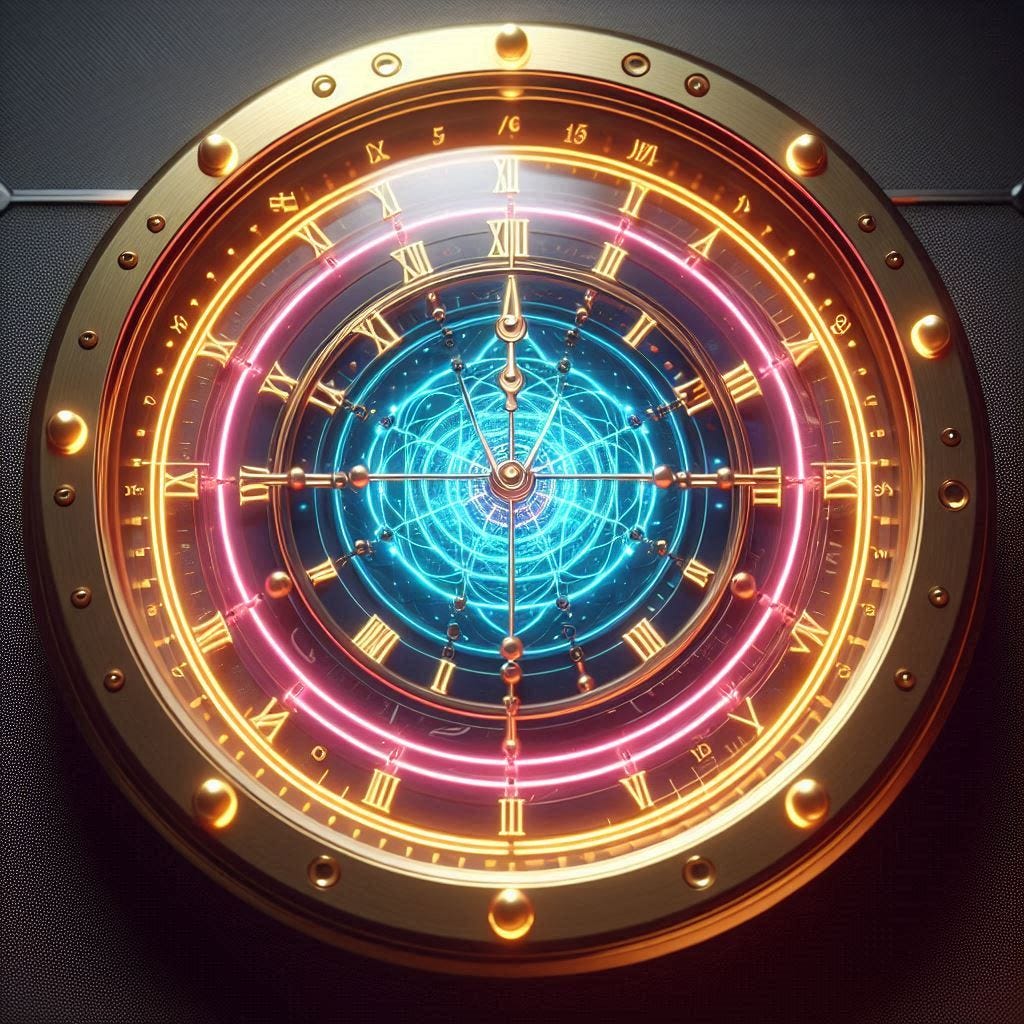Intro
A chronotheory is a theoretical framework that attempts to explain how time fundamentally operates and exists within our universe. Different chronotheories propose various models for time's structure, flow, and relationship to reality. While some theories suggest time flows linearly in one direction, others propose it exists all at once in a four-dimensional block, and still others suggest branching timelines or cyclical patterns.
These competing theories attempt to explain phenomena like causality, time's arrow (why time appears to flow forward), the relationship between past, present and future, and whether time is fundamental to reality or emerges from deeper physical principles. The existence of multiple chronotheories reflects the complex nature of time and our limited understanding of its true nature, with each theory offering different insights and facing different challenges in explaining temporal phenomena.
Quantum Chrono Theories:
Block Universe Theory, supported by Einstein and Minkowski, suggests all moments - past, present, and future - exist simultaneously in a four-dimensional "block" of spacetime. This view challenges our perception of time's flow, suggesting our experience of time passing is an illusion.
Presentism, advocated by philosophers like Arthur Prior and contemporary thinkers like William Lane Craig, argues that only the present moment truly exists. Past events no longer exist, and future events don't yet exist. This view aligns more closely with our intuitive experience of time but faces challenges from relativity theory, which suggests simultaneous events are relative to the observer.
Growing Block Universe Theory, developed by C.D. Broad and supported by others like Michael Tooley, proposes a middle ground where both past and present exist but the future does not. In this view, reality continuously grows as present moments become past, creating an ever-expanding "block" of existence. This theory attempts to reconcile our experience of time's flow with the permanence of past events.
Other Notable Theories:
Linear Time: This is the most common perception of time, where events occur in a sequential order from past to present to future. It's like an arrow moving in a straight line.
Cyclic Time: In many ancient cultures, time is seen as repeating cycles, like the seasons, day and night, or reincarnation in some beliefs. It's a never-ending loop.
Branching Time: This theory proposes that each moment branches into multiple possible futures. It aligns with the idea of parallel universes, where each decision creates a new timeline.
Arrow of Time: Linked to the second law of thermodynamics, this theory sees time as having a direction due to the increase in entropy or disorder. It's what makes the past different from the future.
Quantum Time: In quantum mechanics, time can behave very differently from our usual understanding. It might not be linear or could even be entangled with other dimensions.
Temporal Dualism: This theory posits that time consists of two dimensions: A-series (past, present, future) and B-series (events ordered by earlier-than/later-than relations), and both are necessary to understand the flow of time.
Final Thoughts
While numerous theories about the nature of time exist, it's important to recognize that these ideas largely remain speculative. Despite advancements in physics and philosophy, a concrete, universally accepted understanding of time eludes us. Theories like time dilation and quantum mechanics provide glimpses into the complexity of temporal phenomena, yet no single theory has been able to comprehensively explain the entirety of time's nature. As a result, much of our understanding is still rooted in speculation and interpretation, making time one of the most intriguing and enigmatic aspects of the universe. For all we know, time could have multiple aspects of a mixture of several theories, that combine to create the complex nature of time.





What